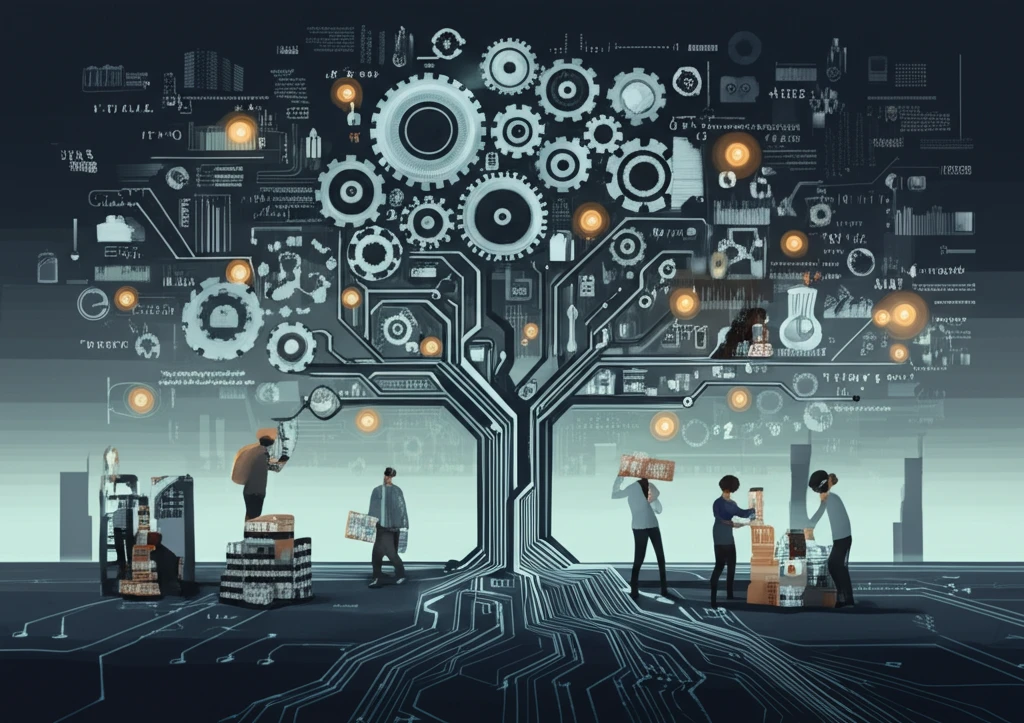
Unlock the Future: How STEM Education is Reshaping Learning for a New Generation
"Dive into the world of STEM education, exploring its core principles, practical frameworks, and why it's essential for K-12 success."
The dawn of the new millennium has ushered in unprecedented scientific advancements, profoundly impacting every facet of our social and economic structures. At the heart of this transformation lies Engineering in STEM, a discipline now recognized as a critical priority, reflecting the accelerating pace of scientific progress. STEM education distinguishes itself by weaving together concepts traditionally taught in isolation, emphasizing the application of knowledge to solve real-world problems and foster innovation.
In STEM learning environments, educators consciously strive to synchronize learning objectives and activities across two or more STEM disciplines, whether in classrooms or schools. This approach aims to provide a holistic and integrated educational experience, breaking down traditional silos between subjects. This article delves into a critical analysis of the contexts and frameworks that support engineering in STEM education, offering research-backed insights and practical recommendations to enhance STEM teaching and learning.
Engineering education plays a pivotal role in cultivating essential 'habits of mind,' including systems thinking, creativity, optimism, collaboration, effective communication, and ethical considerations. Integrated into the Next Generation Science Standards (NGSS), engineering design education equips students with the skills to transfer knowledge across various science disciplines. Through activities such as modeling, planning, conducting investigations, analyzing data, and constructing explanations, students demonstrate a comprehensive understanding of core scientific concepts, bridging the gap between theory and application.
The Evolution of STEM Frameworks

While various approaches exist for integrating STEM into educational systems, influenced by unique political, social, and cultural contexts, the objective remains consistent: to equip students with interdisciplinary skills and knowledge. Despite the absence of a universally accepted method for subject integration and STEM implementation, theoretical frameworks and models offer valuable guidance for curricular and program inclusion. Theories such as Capraro's Project-based Learning, Roni's Problem-based Learning, T-STEM, and Dugger's STEM Implementation Theory provide diverse strategies for enhancing STEM education.
- Project-Based Learning (PBL): Enables students to acquire a deeper knowledge through active exploration of real-world challenges and problems.
- Problem-Based Learning (PBL): Students learn about a subject through the experience of solving an open-ended problem found in trigger material.
- T-STEM Model: Focuses on creating rigorous and relevant educational experiences that prepare students for STEM careers and higher education.
- Dugger's STEM Implementation Theory: Provides a structured approach for integrating STEM disciplines into the curriculum, emphasizing collaboration and innovation.
Conclusion: Charting the Future of STEM Education
STEM-focused career and technical education (CTE) programs offer invaluable opportunities in high schools and regional centers, preparing students for diverse STEM careers while engaging those at risk of dropping out. This research provides a clear definition and purpose of STEM for K-12 students, aligned with extensive research literature. Pre-service, in-service, and administrative leaders can leverage this information to articulate the meaning, goal, and purpose of STEM within their curricula, fostering collaboration and clarity among educators.
